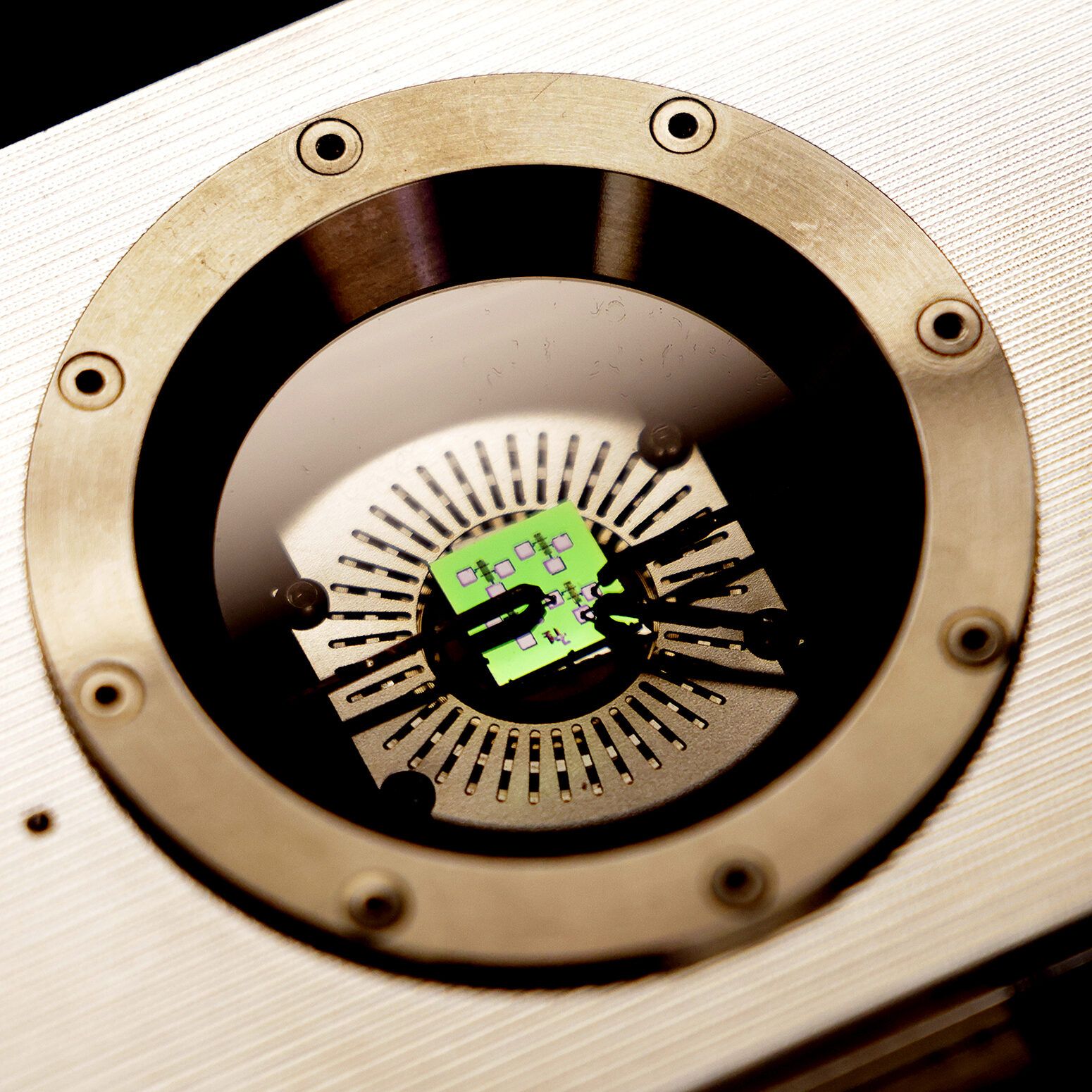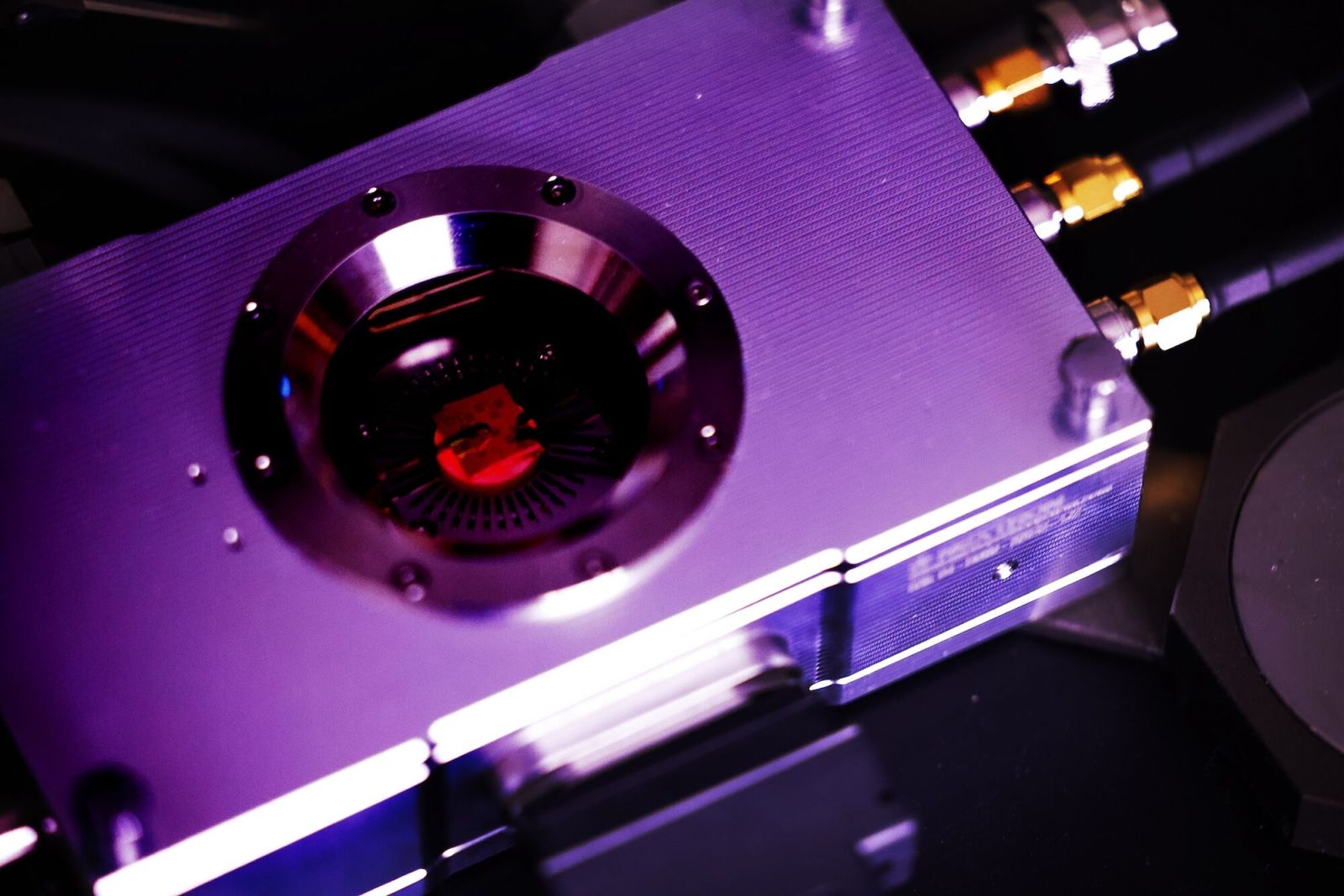Follow us on Google News (click on ☆)

Memory devices made from tantalum oxide on this chip can store data for both conventional memory and in-memory computing at temperatures above 1000°F (538°C).
Image credit: Brenda Ahearn, Michigan Engineering
This technology, of the ECRAM type, relies on the movement of oxygen ions rather than electrons. Unlike traditional silicon semiconductors, which become unstable beyond 150°C (302°F), this memory works perfectly at over 600°C (1112°F). It uses two layers (one of tantalum, the other of tantalum oxide) separated by a solid electrolyte, allowing for stable information storage.
The mechanism is similar to that of a battery. Oxygen ions move between the layers under the effect of a voltage, altering the conductivity of the material. This variation between conductive and insulating states encodes binary data. The process is reversible and can be repeated without loss of performance.
Potential applications are vast. This memory could equip space probes destined for Venus, where temperatures reach 465°C (869°F). It would also be useful in fusion reactors or aircraft engines, where extreme heat currently limits the use of electronics.
However, this technology has a limitation: it does not work below 250°C (482°F). To address this issue, researchers are considering integrating a heating system. This would allow the memory to be used in ambient temperature environments after a preheating phase.

The ceramic heater turns red when heated to high temperatures.
Photo credit: Brenda Ahearn, Michigan Engineering
Current performance is promising. At this stage, the prototype can store a single bit of information for more than 24 hours at 600°C (1112°F). But researchers estimate that with improvements, this memory could reach capacities on the order of several gigabytes, paving the way for complete computing systems operating in extreme conditions.
Finally, this technology stands out for its low energy consumption. It operates at lower voltages than other high-temperature memories, such as those using ferroelectric materials. This makes it a sustainable solution for applications demanding in terms of performance and reliability.